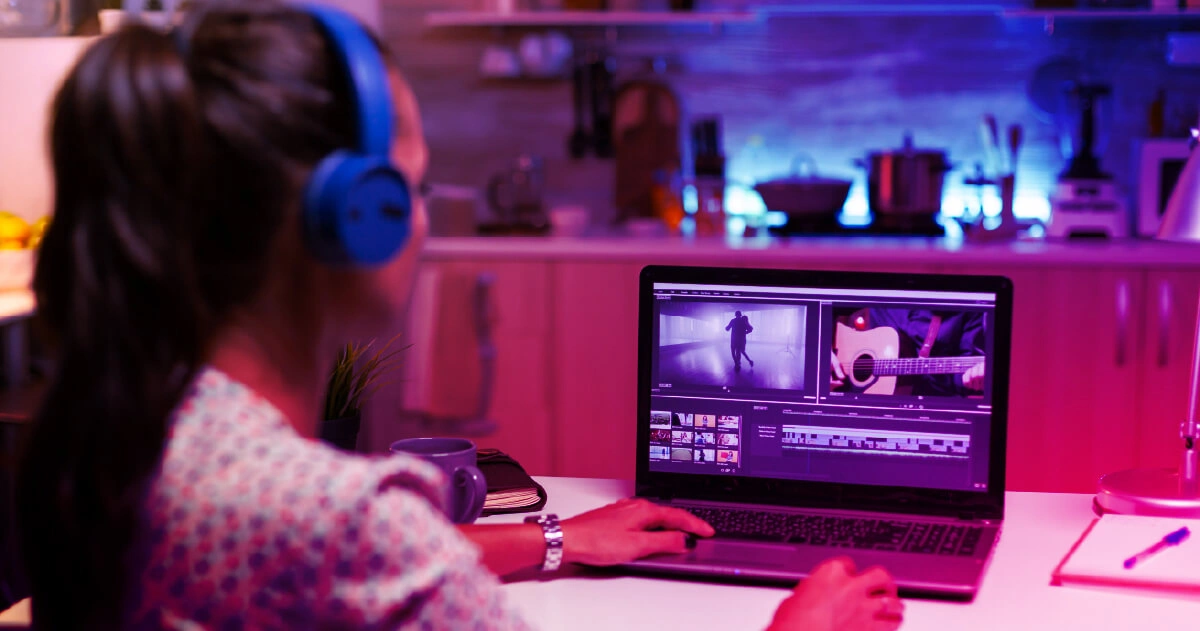
How music sync licensing helps artists reap royalty rewards and exposure in today’s visual media landscape
From TV to social media and gaming to fitness platforms, the growing demand for music creates unique opportunities for artists like you to license your work, engage with fans, expand your reach and collect paychecks. A multibillion-dollar music industry segment, music synchronization licensing — or music sync licensing — involves licensing recorded music to all forms of visual media.
Recent examples include:
- The Batman movie trailer: Nirvana’s “Something In The Way”
- Peloton smart workout program: three exclusive David Bowie remixes
- Thor: Love and Thunder: Guns N’ Roses’ “Sweet Child of Mine”
A music sync license authorizes the reproduction of your musical work to be used in connection with visual media. If an existing sound recording is to be used in a new audiovisual work, a master-use license is also required from the record company. In exchange for placing one of your songs in a commercial, TV show, film or video game, you earn a synchronization fee upfront. You also earn royalties depending on where and how often the music is played.
Hitting a growth spurt
Music sync licensing benefits from significant growth in many areas of the music industry, including:
- An increase in long-form streaming content
- An increase in music used in brand advertising
- New apps, digital experiences and technologies (smart contracts and blockchain) leveraging music
- Cloud-based solutions
This growth helps to increase the opportunities composers may seek to exploit their songs. The rise of streaming platforms provides greater landscapes in which to compose bespoke music tailored to the associated television shows and movies. Brand advertising allows songwriters to mine their catalog of written songs to either place directly or leverage one of the many music libraries to place on their behalf with an advertisement.
If new technologies such as smart contracts and blockchain find greater adoption in the music industry, a fairer form of representation and compensation may be delivered to the creators of works. As a result, sync licensing deals may occur more efficiently and with greater fairness to all parties involved. Many music publishers and libraries are trying new ways to automate the process of song registration, and APIs (application programming interfaces) are becoming more widely adopted by these organizations.
Collaborative cloud-based solutions have also become more adopted by general users. Their power to provide greater transparency to all parties involved in music sync licensing deals allows for more informed decision-making.
It’s who you know
Knowing whom to contact is half the battle when pursuing music sync licensing opportunities. Find out everything you can about visual media that matches your musical style. Research which entertainment productions are looking for your specific genre of music. Search for other artists in your genre and see where they’ve succeeded with sync licensing.
Your new best friends: music supervisors and sync agents
With your target list of potential shows, you’re ready to reach out to music supervisors. That song you can’t get out of your head from a movie you just watched is the result of a music supervisor’s hard work. They collaborate with creative teams, producers, directors, record labels, publishers, sync agents, artists and managers.
As go-betweens, sync agents represent artists and can offer music rights to the music supervisor.
When dealing with music supervisors and sync agents via email, you need to stand out in the crowd, which can be challenging, considering the volume of emails they receive. Highlight your background information, including any radio coverage or publicity you’ve generated.
Quality over quantity
The quality of your music production is a top priority. Make sure that everything from sound recording to mixing and mastering is the best quality possible so it stands up to music submitted by others.
Once you’re ready to submit to the music supervisor, include all metadata — artist and song name, copyright holder, song description, genre, lyrics and contact info — in your file before sending. Doing so helps the music supervisor file your song correctly. An instrumental version is more likely to get selected than a song with lyrics simply because instrumentals don’t interfere with on-screen dialog or voiceovers in commercials. The music supervisor will file your song, and then you’ll be contacted by the production team.
As mentioned in a previously, you should sign up with a performance rights organization (PRO) like the American Society of Composers, Authors and Publishers (ASCAP) to help collect royalties for you whenever the song is aired.
Place your catalog in the music library and benefit from platform traffic. The income received from these platforms is passive and doesn’t require any extra work. Sticking to non-exclusive libraries for short-term deals will prevent your music career from stalling.
Embrace that syncing feeling
With the creation of more visual media content for the masses, music sync licensing will continue to grow. Keeping pace with this growth by creating quality music and pursuing sync licensing opportunities is a surefire way to expand your reach, boost your career and generate substantial up-front sync fees and back-end royalties.
Technologies can undoubtedly assist in the distribution and easing of finalizing agreements between song creators and content distributors. The soundest advice to all composers and songwriters is to continue to create music in a genre you most enjoy and target the best opportunities to exploit your works commercially.
Get the latest news, updates, and exclusive insights from Vistex delivered straight to your inbox. Don’t miss out—opt in now and be the first to know!


